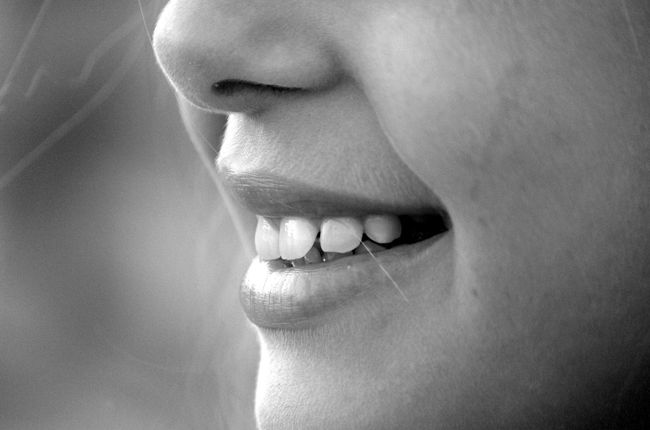Periodontics
The term “periodontics” refers to the dental specialty that pertains
to the prevention, diagnosis, and treatment of periodontal disease
that affects the gums and jawbone. The gum tissues serve to
surround and support the teeth and the underlying jawbone anchors
teeth firmly in place. Periodontists have completed several
years of extra dental training and are concerned with maintaining
the function, health, and aesthetics of the jawbone and tissues.
Reasons for periodontal treatment
Periodontal disease is a progressive condition which begins with
mild gum inflammation called gingivitis. It is the leading
cause of tooth loss in adults living in the developed world and
should be taken very seriously. Periodontal disease (often
called gum disease) is typically signified by red, swollen, painful,
or bleeding gums, but in some cases has no noticeable symptoms.
The periodontal disease generally begins when the bacteria living in
plaque cause an infection in the surrounding tissues of the teeth,
causing them to become irritated and painful. Eventually, this
infection will cause the jawbone to recede and the tooth to become
loose.
There are several reasons why periodontal treatment may be
necessary:
-
Moderate/advanced gum disease – This occurs when the gums
are bleeding, swollen or red around most teeth and the jawbone has
begun to recede.
- Localized gum recession – The infection which propagates moderate or advanced gum disease often begins in one area. Gum recession may also be caused due to over brushing with a hard bristle brush, or due to a tooth that is not positioned properly. Immediate treatment is required to prevent further spreading.
- Before crown lengthening – The periodontist may lengthen the crown of the tooth by removing surrounding soft tissue to provide more tooth exposure.
- Ridge augmentation – This procedure, often called “recontouring” may be required to correct an uneven gum line. Before embarking on treatment, a periodontist needs to treat any bacterial infections and periodontitis.
In the case of mild/moderate periodontal problems, the focus of the
periodontist will be on curing the underlying bacterial infection
and then providing advice on the most appropriate home cleaning
methods.
Sometimes a deep scaling is needed to remove the bacterial plaque
and calculus (tartar) from the teeth and tissues. Where the
periodontal disease is advanced and the jawbone has regressed
significantly, more intensive cleaning may be recommended and loose
teeth that cannot be saved will be removed.
The periodontist is trained in all aspects of dental implant
procedures, which can restore functionality to the mouth when teeth
have been affected by periodontitis.


Periodontal Disease
The word periodontal means “around the tooth”. Periodontal
disease attacks the gums and the bone that support the
teeth. Plaque is a sticky film of food debris, bacteria, and
saliva. If plaque is not removed, it turns into calculus
(tartar). When plaque and calculus are not removed, they
begin to destroy the gums and bone. Periodontal disease is
characterized by red, swollen, and bleeding gums.
Four out of five people have periodontal disease and don’t know
it! Most people are not aware of it because the disease is
usually painless in the early stages.
Not only is it the number one reason for tooth loss, research
suggests that there may be a link between periodontal disease and
other diseases such as stroke, bacterial pneumonia, diabetes,
cardiovascular disease, and increased risk during pregnancy.
Researchers are determining if inflammation and bacteria
associated with a periodontal disease affect these systemic
diseases and conditions. Smoking also increases the risk of
periodontal disease.
Good oral hygiene, a balanced diet, and regular dental visits can
help reduce your risk of developing periodontal disease.
Signs and symptoms of periodontal disease:
-
Bleeding gums - Gums
should never bleed, even when you brush vigorously or use dental
floss.
- Loose teeth - Also caused by bone loss or weakened periodontal fibers (fibers that support the tooth to the bone).
- New spacing between teeth - Caused by bone loss.
- Persistent bad breath - Caused by bacteria in the mouth.
- Pus around the teeth and gums - Sign that there is an infection present.
- Receding gums - Loss of gum around a tooth.
- Red and puffy gums - Gums should never be red or swollen.
-
Tenderness or Discomfort - Plaque, calculus, and bacteria irritate the gums and
teeth.
SRP:
SRP happens when you don’t go to professional cleaning for more
than 6 months or longer. Now the soft plaque and bacteria got
enough time to do the damage. The bone starts to lose, the
bacteria absorb calcium and form hard calculus inside your gum
where is not accessible for the patient to clean. Even
professional prophy can’t reach it since they are deep in the
pocket. It requires doctor or hygienist to spend more time go all
the way to the bottom of the sockets to physically remove them.
Even with calculus removal. There are live bacterial still
attached to the gum and other tissue. We use ozone oil to kill
these bacteria so your gum will have a better chance of
healing.
Location
- MON: Closed
- TUE - WED: 8:30 am - 5:00 pm
- THU: Closed
- FRI: 8:30 am - 5:00 pm
- SAT: 9:00 am - 4:00 pm
- SUN: Closed






